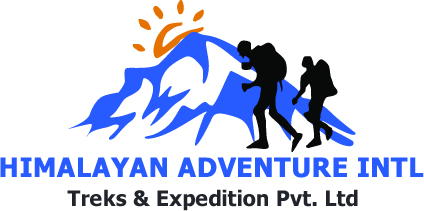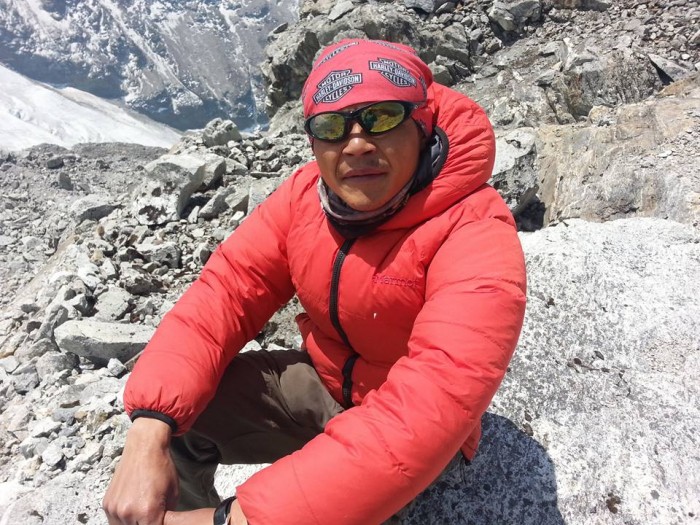Kyajo Ri Peak Climbing Expedition: A Thrilling Himalayan Adventure
Kyajo Ri (6,186m) is one of Nepal’s most exciting trekking peaks, offering a challenging yet rewarding climb for adventure enthusiasts. Nestled in the Everest region, the Kyajo Ri Peak Expedition is perfect for climbers seeking an off-the-beaten-path adventure. With breathtaking landscapes, technical climbing routes, and a true Himalayan experience, Kyajo Ri Peak Climbing is an ideal challenge for those looking to push their limits.
Why Choose Kyajo Ri for Your Next Climbing Adventure?
Kyajo Ri is an excellent choice for climbers looking for a moderately technical ascent in the Khumbu region. Unlike other crowded trekking peaks such as Island Peak or Mera Peak, Kyajo Ri Peak offers solitude and a pristine mountain experience. Its well-defined ridges, mixed terrain of snow, ice, and rock, and stunning panoramic views of Everest, Lhotse, and Cho Oyu make it a top choice for serious climbers.
Kyajo Ri Difficulty Level: Is It for You?
Climbing Kyajo Ri is considered moderately to highly difficult, making it suitable for those with prior mountaineering experience. Here’s what makes Kyajo Ri difficulty stand out:
-
Technical Sections: The climb involves rock climbing, steep snow slopes, and ice climbing sections.
-
High Altitude Challenges: At 6,186m, climbers must be well-acclimatized to avoid altitude sickness.
-
Physical Fitness: Strong endurance, prior experience with alpine climbing, and familiarity with using crampons, ice axes, and ropes are essential.
-
Remote and Isolated: The approach to Kyajo Ri Base Camp is remote, requiring self-sufficiency and proper preparation.
Despite these challenges, with proper acclimatization, a well-planned itinerary, and experienced guides, the Kyajo Ri Expedition is an achievable goal for dedicated climbers.
Best Season for Kyajo Ri Peak Climbing
The best time to attempt Kyajo Ri Peak is spring (March-May) and autumn (September-November). These seasons provide stable weather, clear skies, and favorable climbing conditions. Spring offers mild temperatures and blooming rhododendrons along the trekking route, while autumn provides crystal-clear mountain views and dry trails.
Kyajo Ri Expedition Itinerary
A typical Kyajo Ri Expedition lasts 15-18 days, including acclimatization and trekking to base camp. Below is a suggested itinerary:
Day 1-2: Arrival in Kathmandu & Preparation
-
Arrive in Kathmandu (1,400m), meet your climbing team, and check climbing gear.
-
Explore the city and obtain necessary climbing permits.
Day 3-5: Trek to Kyajo Ri Base Camp
-
Fly from Kathmandu to Lukla (2,840m) and trek to Phakding.
-
Trek to Namche Bazaar (3,440m) and rest for acclimatization.
-
Hike to Kyajo Ri Base Camp (4,500m) via Mende village.
Day 6-8: Acclimatization & Training
-
Acclimatization hikes to higher altitudes to prepare for the summit.
-
Technical training on glacier travel, ice climbing, and rope management.
Day 9-12: Summit Push & Return to Base Camp
-
Move to High Camp (5,700m) for summit preparation.
-
Early morning summit attempt (6,186m), followed by descent to Base Camp.
-
Enjoy stunning sunrise views of Everest, Lhotse, and Makalu from the summit.
Day 13-15: Return Trek & Departure
-
Trek back to Namche Bazaar and Lukla.
-
Fly to Kathmandu and celebrate the successful climb.
-
Departure from Kathmandu.
Kyajo Ri Climbing Permit & Cost
To climb Kyajo Ri Peak, you need several permits:
-
Sagarmatha National Park Permit: USD 30 per person
-
Pasang Lhamu Rural Municipality Fee: USD 30 per person
-
Kyajo Ri Climbing Permit: Varies by season ($300 in spring, $250 in autumn)
The overall cost of the Kyajo Ri Expedition depends on group size, guiding services, equipment rental, and logistics. On average, expect to spend USD 2,800 – 3,800 per person, covering permits, guides, food, accommodation, and gear.
Essential Gear for Kyajo Ri Peak Climbing
Having the right gear is crucial for a successful Kyajo Ri Peak Climbing experience. Essential items include:
-
Climbing Gear: Ice axe, crampons, harness, ropes, ascenders, carabiners
-
Clothing: Thermal layers, down jacket, waterproof shell, gloves, and gaiters
-
Footwear: Insulated climbing boots and warm socks
-
Camping Equipment: Sleeping bag (-20°C), tent, and cooking supplies
-
Medical Kit: Altitude sickness medication, first aid kit, and hydration salts
Tips for a Successful Kyajo Ri Expedition
Train in Advance: Cardiovascular fitness, strength training, and endurance hikes will help prepare you.
Acclimatize Properly: Spend extra days at higher elevations to adjust to the altitude.
Choose Experienced Guides: A certified guide ensures safety and enhances your climbing experience.
Pack Light but Efficiently: Carry only essential gear to minimize weight and increase mobility.
Stay Hydrated and Eat Well: Proper nutrition and hydration help prevent altitude sickness.
Experience the Adventure of Kyajo Ri Peak
The Kyajo Ri Expedition offers an unparalleled blend of adventure, technical climbing, and stunning Himalayan scenery. Whether you’re an experienced climber looking for a new challenge or an adventurer eager to explore Nepal’s remote peaks, Kyajo Ri Peak Climbing is an unforgettable experience.
Join Himalayan Adventure International Treks for a well-organized and thrilling Kyajo Ri Expedition, guided by expert climbers and Sherpas. Book your adventure today and conquer one of Nepal’s most spectacular trekking peaks!

 Plan Your Trip Now
Plan Your Trip Now 


